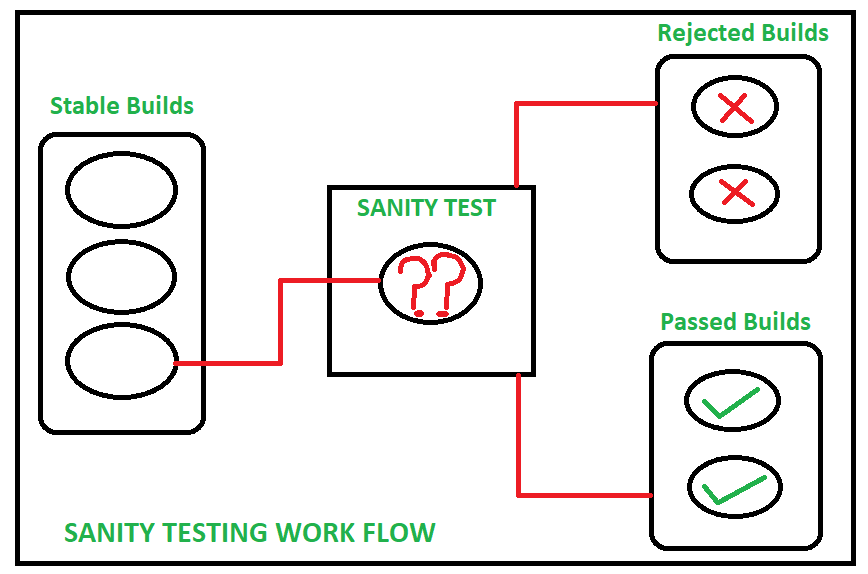Difference between Re-Testing and Sanity Testing
Last Updated :
15 Sep, 2022
Prerequisite – Software Testing
1. Re-Testing:
In Software Testing, Re-Testing refers to the testing again of a module to ensure that the bug is fixed. This means it confirms the test cases that failed in the final execution are passing after the errors/defects are fixed. The process of Re-Testing is as follows –
- At first an error is detected in any module of the application.
- Then it undergoes correction/modification by the developer.
- After the developer has solved and tested the issue again, it is called Re-Testing.

2. Sanity Testing:
In Software Testing, Sanity Testing refers to the testing performed after receiving a software build, with minor changes in code, or functionality, to ascertain that the bugs/errors have been fixed and no further issues are introduced due to these changes. The process of Sanity Testing is as follows –
- A software build is received first.
- Determine that the proposed functionality works roughly as expected after changes.
- If the sanity test fails, the build is rejected.
- If the sanity test passes, it is passed for further testing.

Difference between Re-Testing and Sanity Testing :
| S.No. |
Re-Testing |
Sanity Testing |
| 1. |
Re-Testing is carried out to check and confirm that the test cases that failed in the final execution are passing after those errors/defects are solved. |
Sanity Testing is carried out to check and confirm that the functionalities are working perfectly after minor functionality/bug fixes or any changes. |
| 2. |
Defect verification comes under Re-Testing as a part. |
Defect verification does not come under Sanity Testing as a part. |
| 3. |
Re-Testing is performed before start of Sanity Testing and Regression Testing. |
Sanity Testing is performed before Regression Testing and after Smoke Testing. |
| 4. |
Test cases can not be automated for Re-Testing. |
Sanity Testing is often executed manually. |
| 5. |
Purpose-
Defect fixes is the deciding factor to conduct the testing again.
|
Purpose=
To confirm the “rationality” of the system before moving on to more thorough testing.
|
| 6. |
Re-Testing covers defect verification. |
Sanity testing does not cover defect verification. |
| 7. |
Re-Testing can be performed with the previously used test cases. Means test cases can be reused. |
Sanity Testing can be performed without test cases with domain knowledge. |
| 8. |
Priority of Re-Testing is higher than Sanity Testing. |
Priority of Sanity testing is lower than Re-Testing. |
| 9. |
Before start of testing, test cases for Re-Testing cannot be obtained. |
Test cases for Sanity Testing can be obtained from obtained from the functional specification, manuals, and defect reports in regards to corrected problems. |
| 10. |
Pros-
- Verification of the resolved problem and is functioning as intended.
- Verification time is less because it is only limited to the specific problem or feature.
- The level of the program’s or product’s is raised.
- The same data and environment is used to carry out with the new build.
|
Pros-
- Time saving as the focus is only on one or few areas of functionality.
- It verifies that the application’s functionality still functions properly following a minor change.
- It is unscripted so no effort is made to document it.
- It takes less time to execute.
|
| 11. |
Cons-
- A new build is needed for the purpose of defect verification.
- No automation of the test cases.
- Time consuming because of the re-testing of failed test cases.
- Test cases can only be obtained after the start of testing and not before that.
|
Cons-
- There is complexity in understanding the fixing of defects by the developers that are acknowledged throughout the testing if the design structure level is not followed.
- Testing is carried out for limited features so if other features are having issues then it is difficult to trace them.
- It is not documented so no future references.
|
Like Article
Suggest improvement
Share your thoughts in the comments
Please Login to comment...